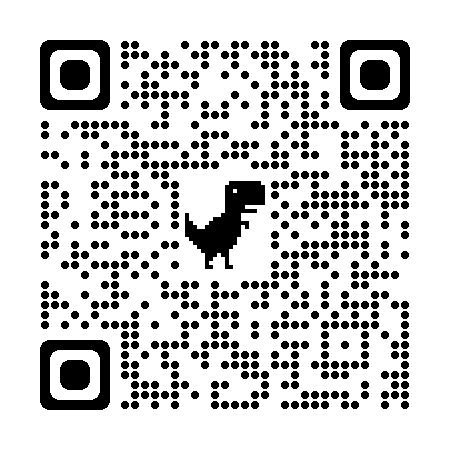Lecture entitled “Jerusalem in the Mamluk Era”
(Video lecture at the bottom of the article)
The Mamluks succeeded the state of Bani Ayyub in the rule of Egypt and the Levant in 1250 AD, who began their rule in the face of the greatest two dangers, They are: Mongol and Crusader, This was demonstrated by their great victory over the Mongols in the Battle of Ain Jalut in 1260 AD and the expulsion of the Crusaders from Palestine in 1291 AD.
Sultan Baibars’ Interest
King al-Zahir Baibars visited Jerusalem again in Sha’ban in 664 AH / 1265 CE. It appears that the following urban landmarks were erected during or shortly after his second visit: Ribat al-Basir located north of the road leading to the Haram from the side of Bab al-Nazer, It was established in 666 AH / 1267 AD. There is a marble slab placed over its door and inscribed on it, In ancient Mamluk copies and in lowercase letters, The following words: “In the name of Allah, the Most Gracious, the Most Merciful. This is what Prince Aladdin Aydghdi stood the corner and was the overseer of the Jerusalem endowments, It has several buildings, ribats and monuments. Stop all inside this door of the cellars and the square on the poor coming to visit Al-Quds Al-Sharif, A perpetual endowment in the year sixty-six and six..”. The Turks have taken advantage of this place, On their covenant, Prison. They called it blood imprisonment
Manifestations of the interest of Sultan Baibars and his successors in the Holy City:
-
Al-Zahir Baybars visited the holy city twice and allocated five thousand dirhams a year to spend on the Al-Aqsa Mosque.
-
He renovated what had been demolished from the Dome of the Rock and built a khan for the sabil.
-
The caliphs of Al-Zahir Baybars took care of Al-Aqsa Mosque and the Dome of the Rock, so they carried out restoration and repair work, On the Temple Mount, they erected arcades and minarets.
-
Reconstruction of ponds and from them Sultan Baraka , And the construction of seven avenues to provide water in the city and its markets.
-
During his reign, Dar al-Hadith was established on the road to Bab al-Silsila.
Mamluk organizations
Administrative organizations of the Mamluks in Jerusalem:
-
Deputy of the Sultanate: Acting on behalf of the Sultan and supervising the affairs of the army and the House of Money, And looking at the Al-Aqsa Mosque.
-
Deputy Castle: He shall maintain and preserve the city citadel and arrange the soldiers who guard and defend it.
-
Governor of the city: It maintains the provision of security and punishes outlaws.
-
Brow: One of his competencies is to settle disputes and disputes among the general public.
-
Al-Dawadar: To consider people’s complaints submitted to the Sultan.
He continued in a lecture entitled “Jerusalem in the Mamluk Era”
Religious functions
Religious functions:
-
Superintendent of the Two Holy Mosques in Jerusalem and Hebron to take care of their endowments and the salaries of their employees.
-
Judges: The Mamluks followed the Shafi’i school of thought, Then they established judicial positions in Jerusalem according to the Hanafi, Maliki and Hanbali schools.
-
The preacher of Al-Aqsa Mosque.
-
The sheikhdom of the school is competent to take care of the Sufis and teachers in Mamluk schools.
Al Quds Schools
The most famous schools in Jerusalem in the Mamluk era:
The city of Jerusalem received the attention of the Mamluk sultans in the field of science and literature, which developed a lot, Students of knowledge were coming to Jerusalem from all over the Islamic world. Where Al-Aqsa Mosque formed the main center of education, In addition to the many schools that were established in the city, and their number amounted to about (27) twenty-seven schools, For example:
-
Ashrafieh School: Founded by the Mamluk Sultan Qaitbay and known as the Royal School.
-
Al-Tankiziyah School : Founded by Prince Tankz Al-Nasiri and located at the gate of the chain.
-
Argonian School: It was built by Prince Arghun al-Kamili.
-
Manjik School: Built by Prince Sayf al-Din Manjak: It is located at the end of the sanctuary from the western side.
-
Al-Tangzia School: One of the famous schools in Jerusalem, It is located at the door of the Al-Aqsa Mosque known as Bab al-Silsila. Established by Prince Saif al-Din Tangiz al-Nasiri in 1328 AD, This school played its role in the scientific movement in Jerusalem. In 1969, the Israeli authorities occupied and stationed there. And the Zionists forbade anyone to enter it, It became a military barracks occupied by the Israeli army, closed its doors and installed machine guns and weapons on its roofs. In March 2006, the Zionist president opened a synagogue below the Tangiziyah school. After several months, the colorists continued to target the school, They opened what they called the “Caravan of Generations Museum.”
-
The Zionist occupation continued, as part of its procedures, to change the landmarks of Jerusalem and Judaize it by converting the Tankaziyah school chapel located within the boundaries of Al-Aqsa Mosque into a synagogue. They located the trash can in the pulpit of the mosque. They made the pulpit wall a free arena for their soldiers’ malicious drawings.
He continued in a lecture entitled “Jerusalem in the Mamluk Era”
Markets
Markets of the Holy City in the Ayyubid and Mamluk Periods:
In the Holy City in this historical period he found a range of diverse and specialized markets, Of which:
-
Qattanin Market.
-
Attarin Market.
-
Goldsmiths market.
-
Textiles and cloth market.
-
Oil market.
-
Fish market.







